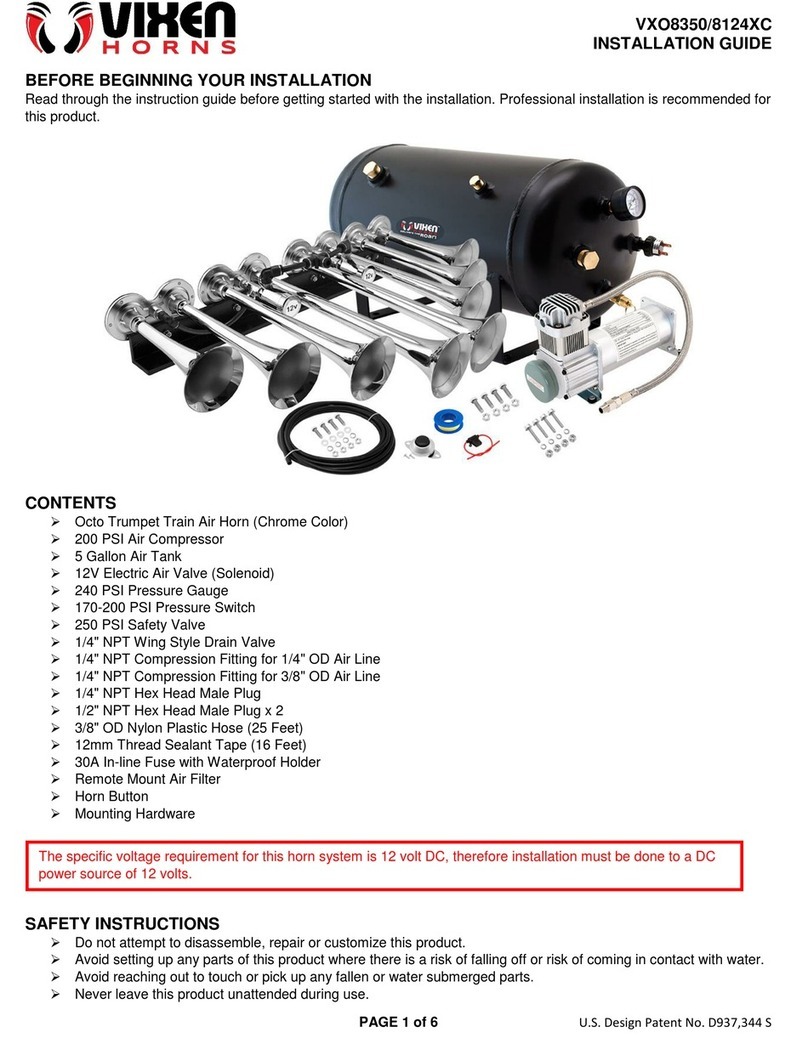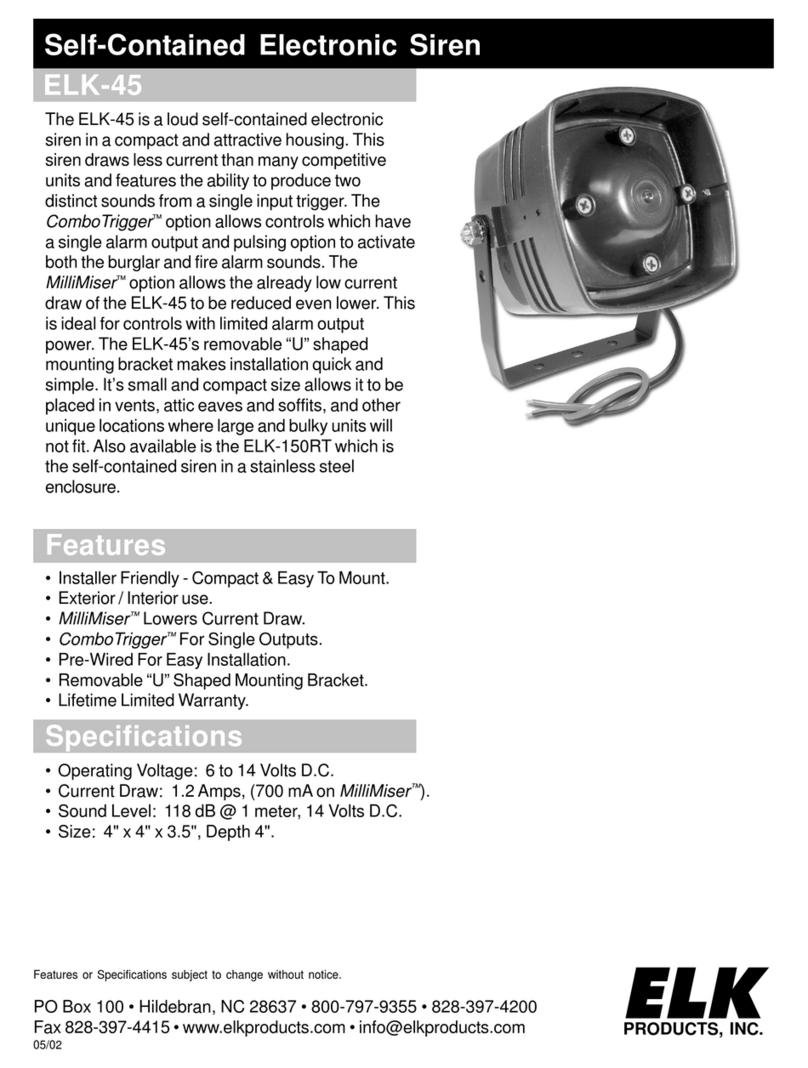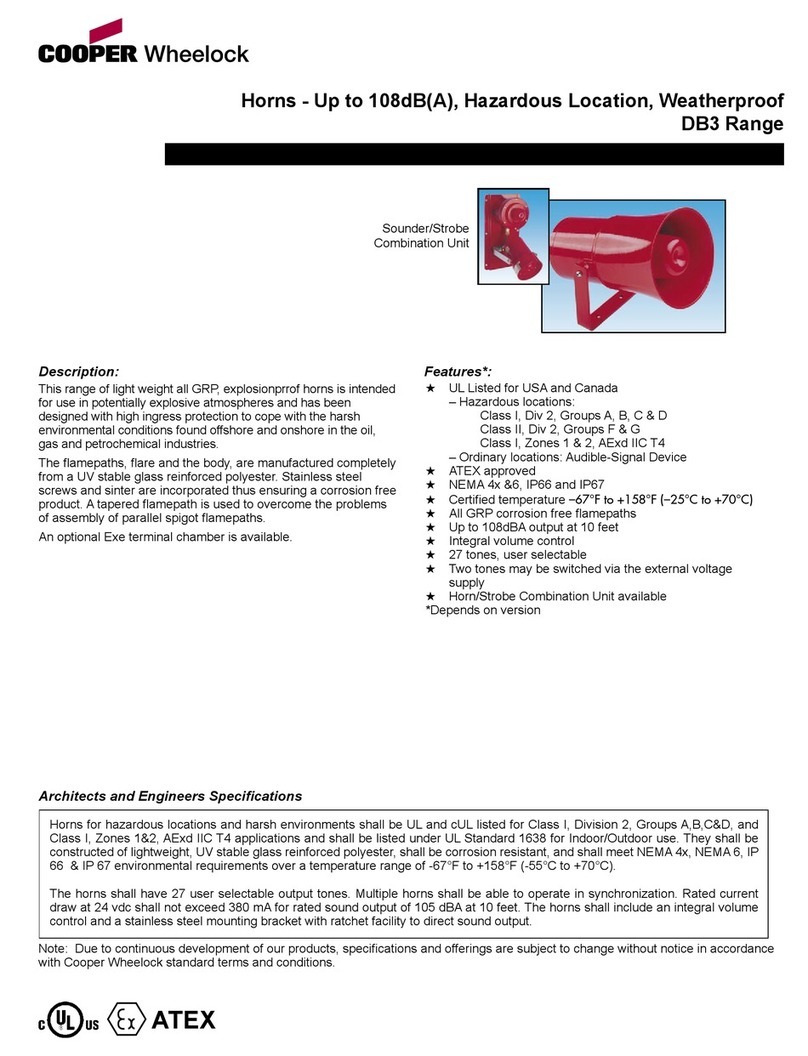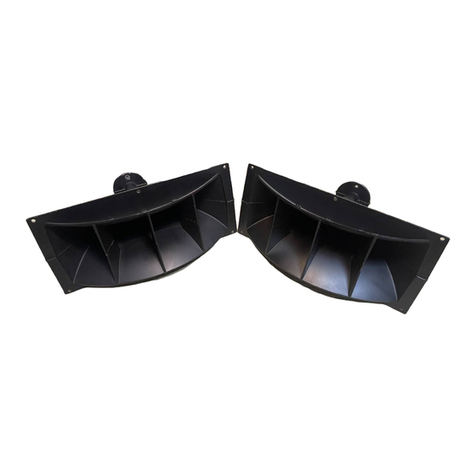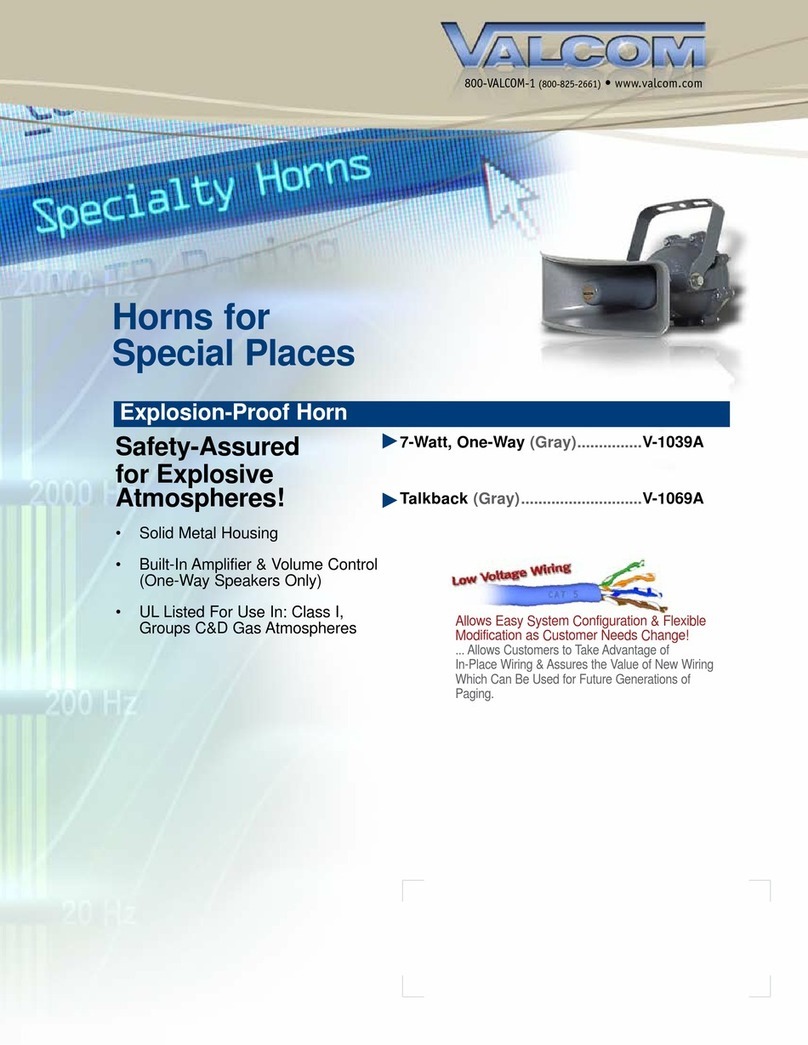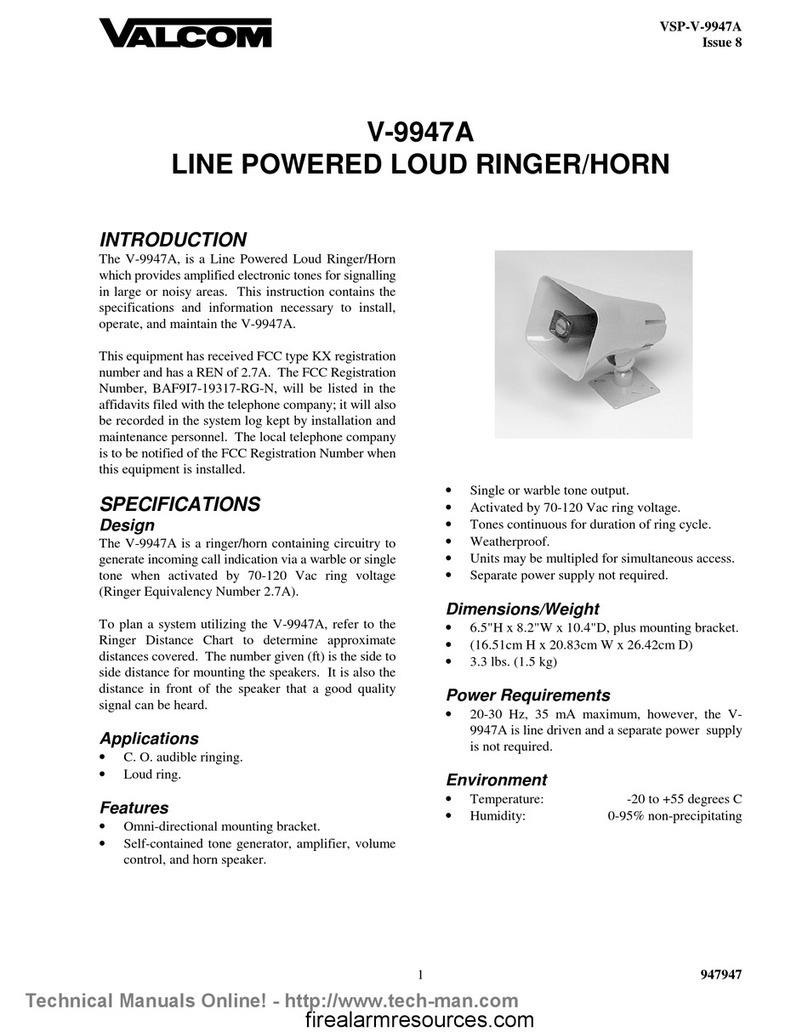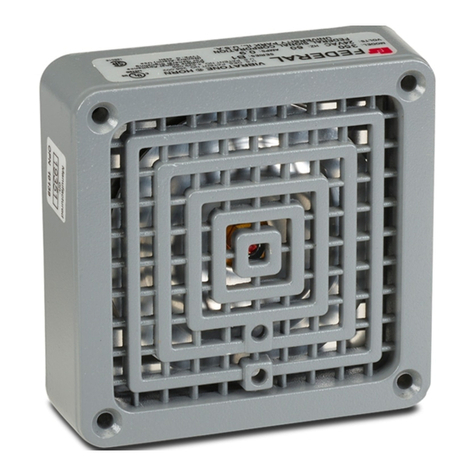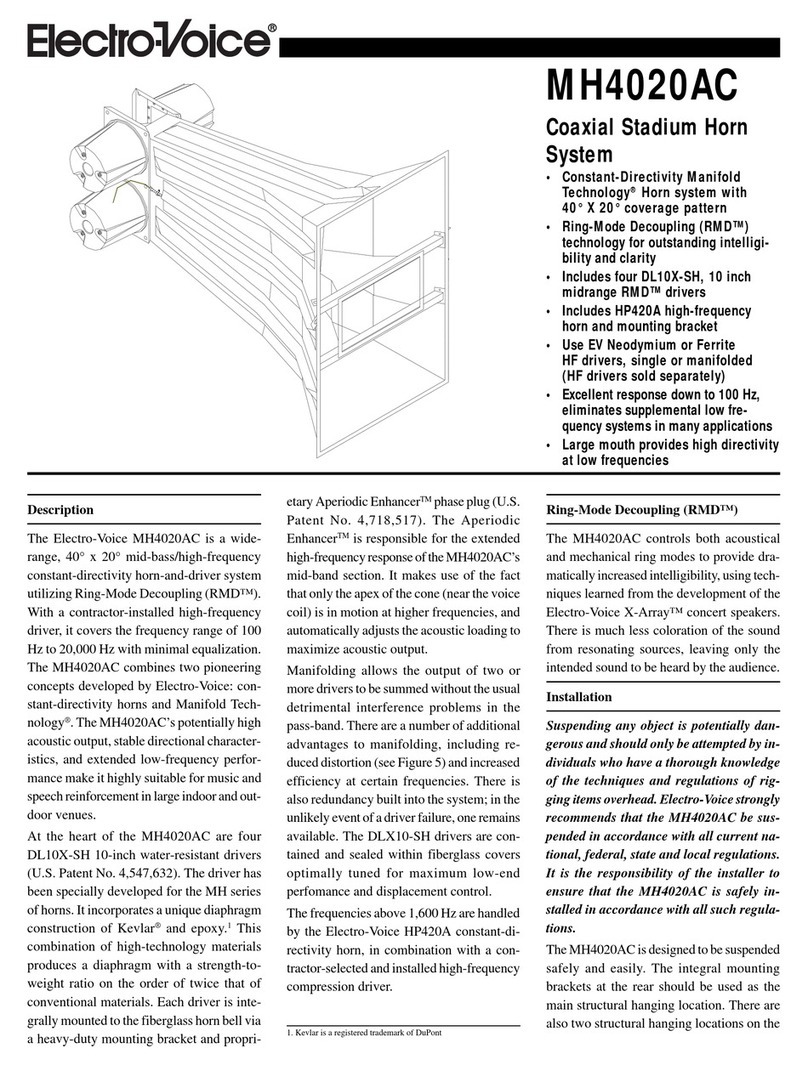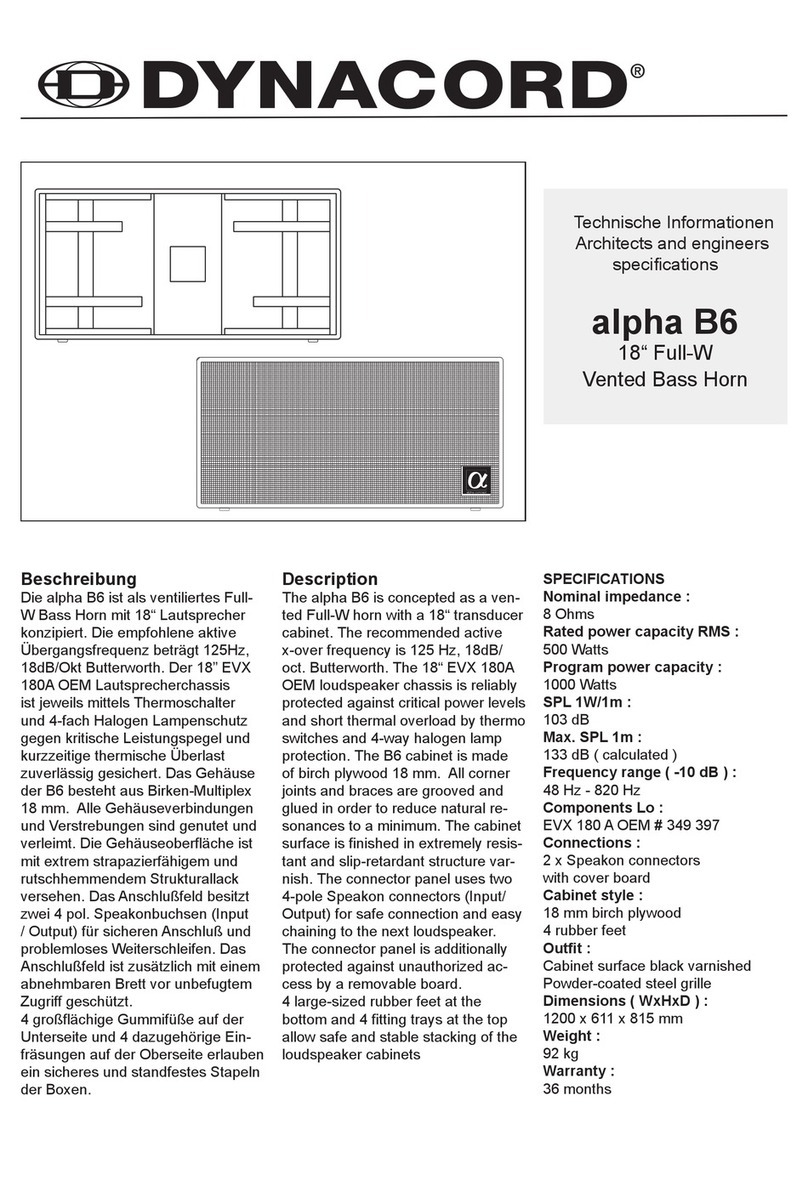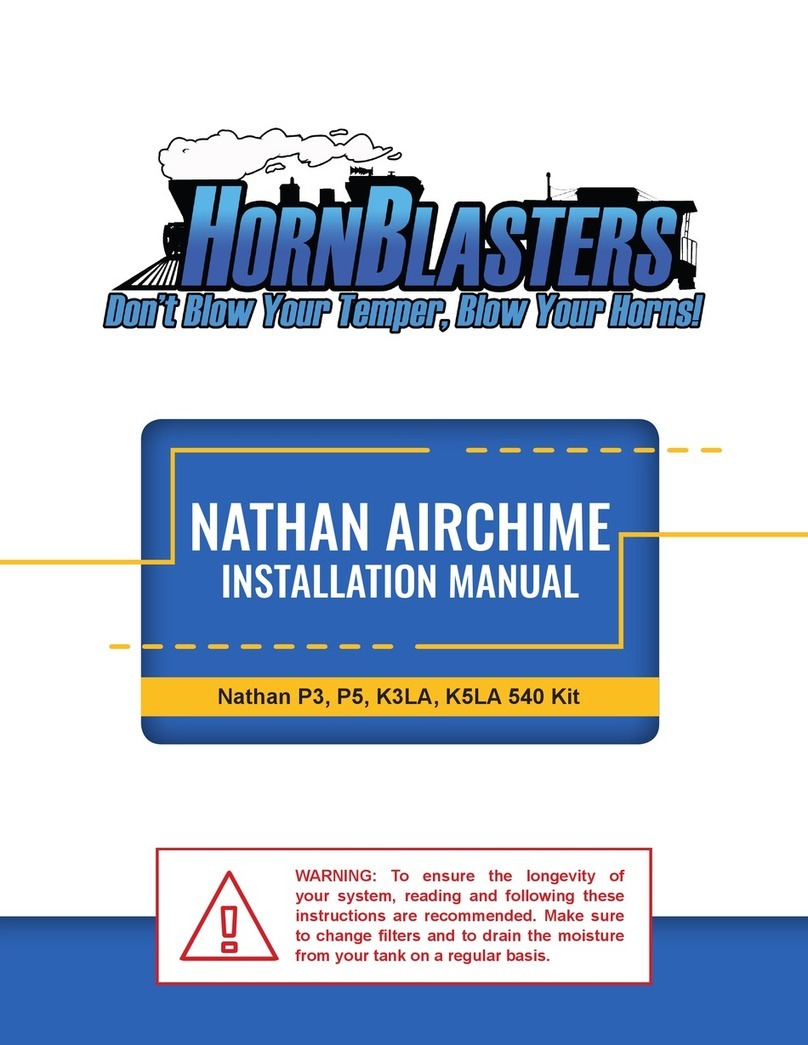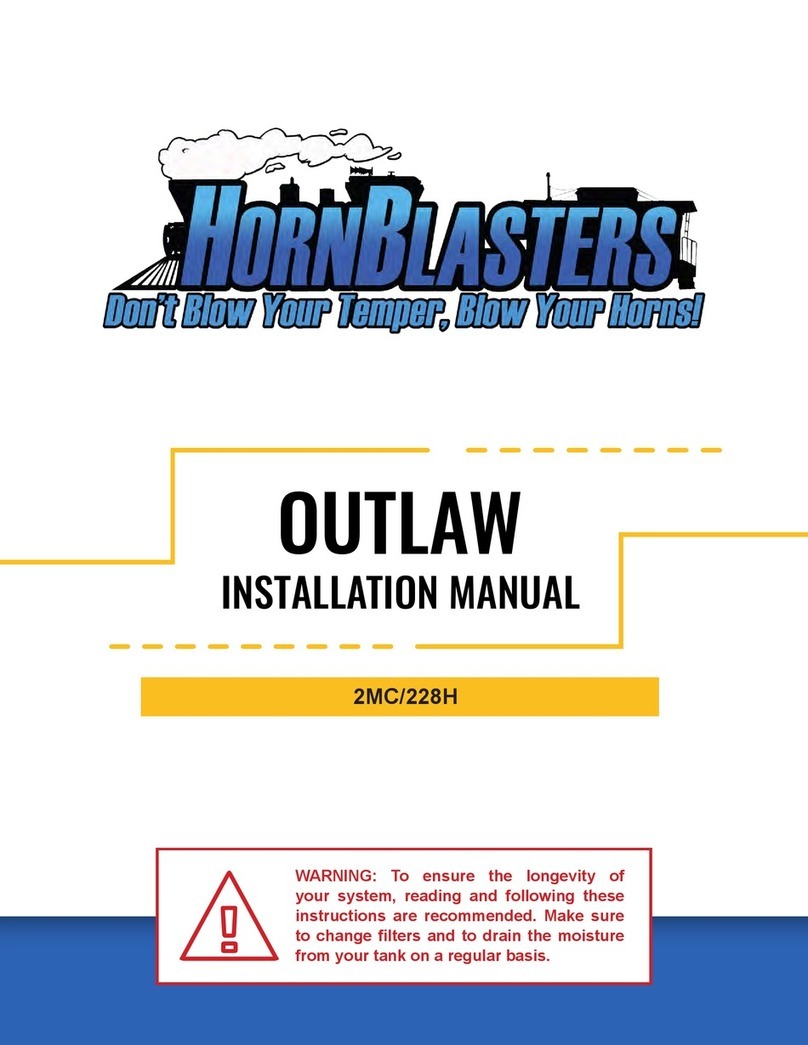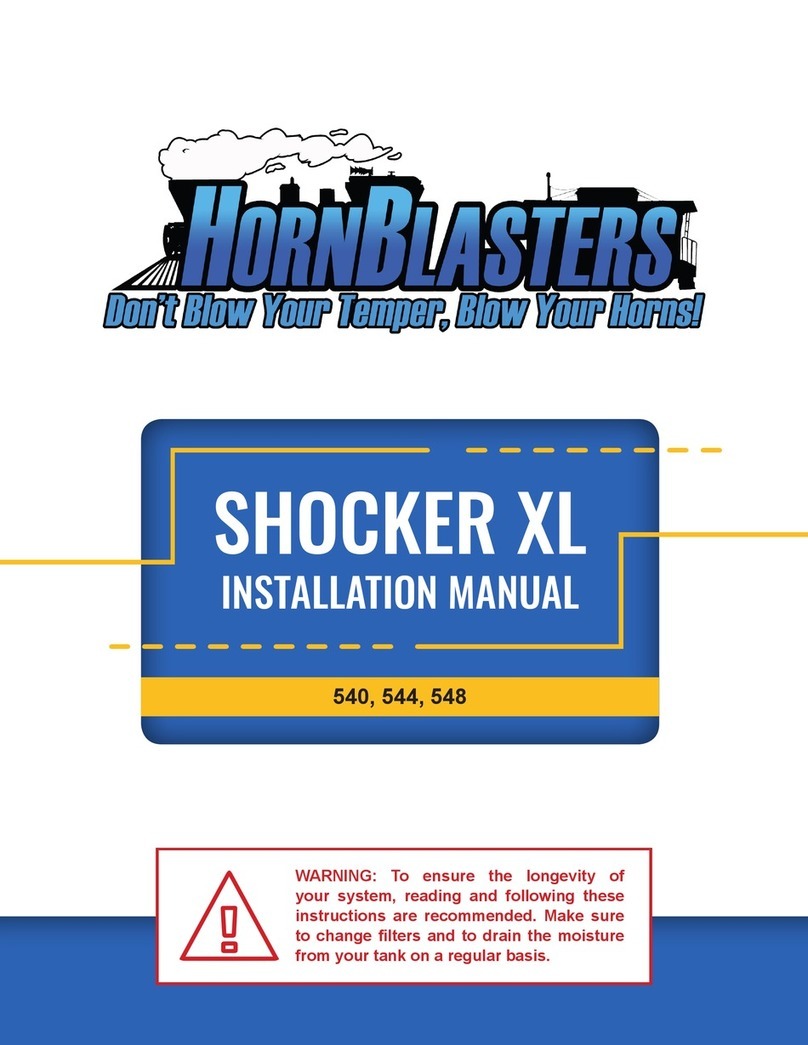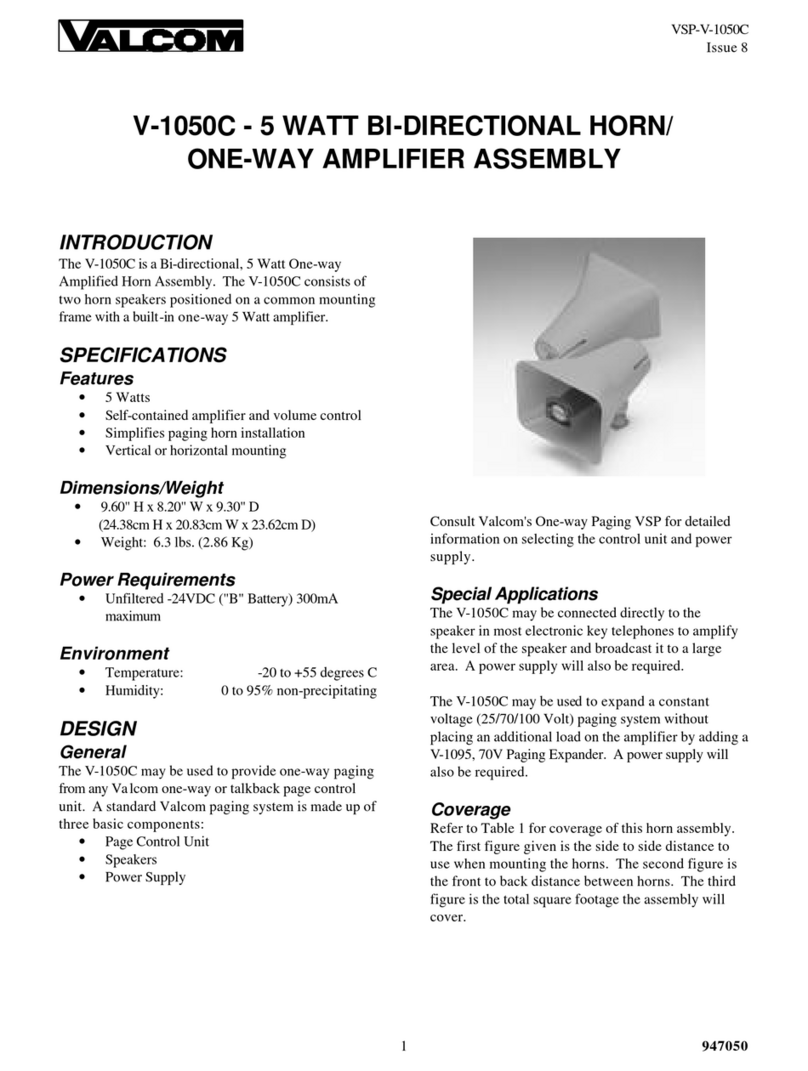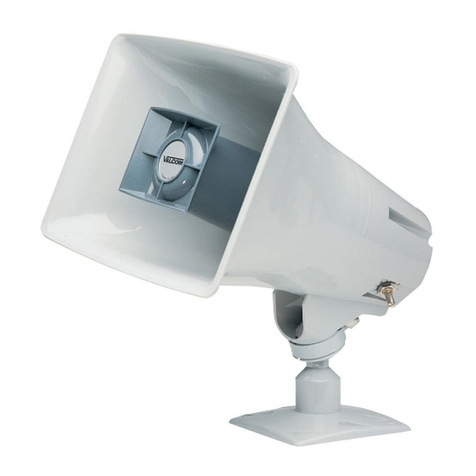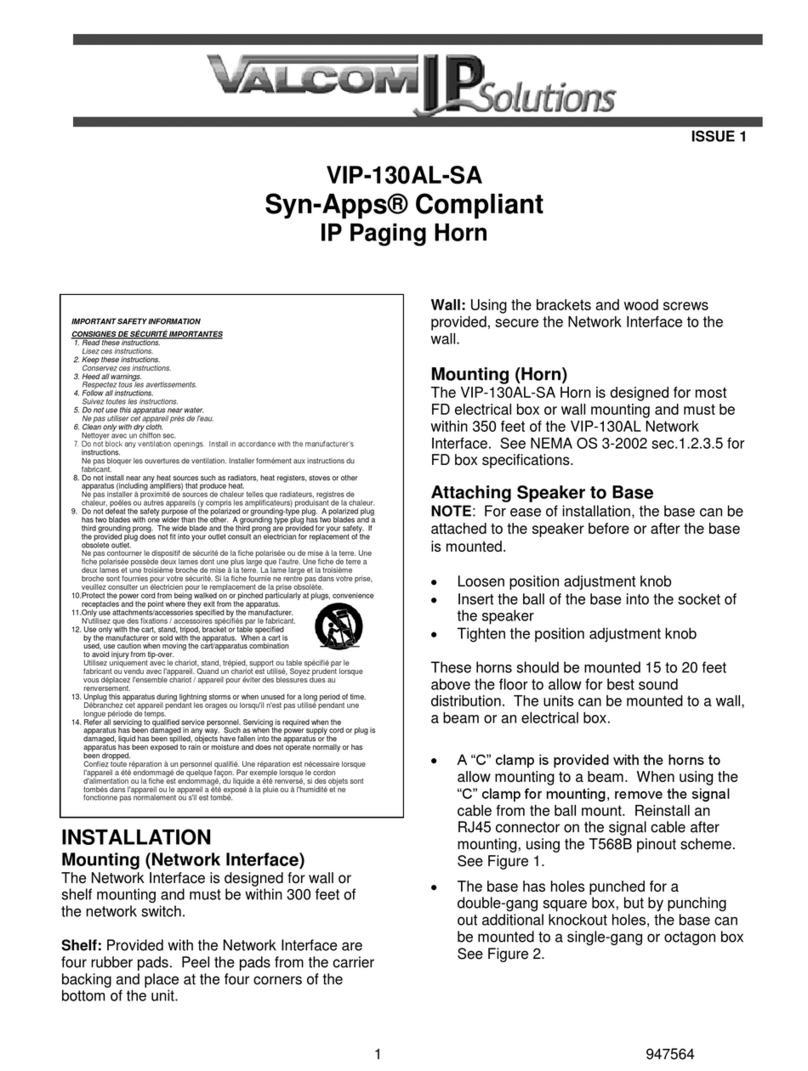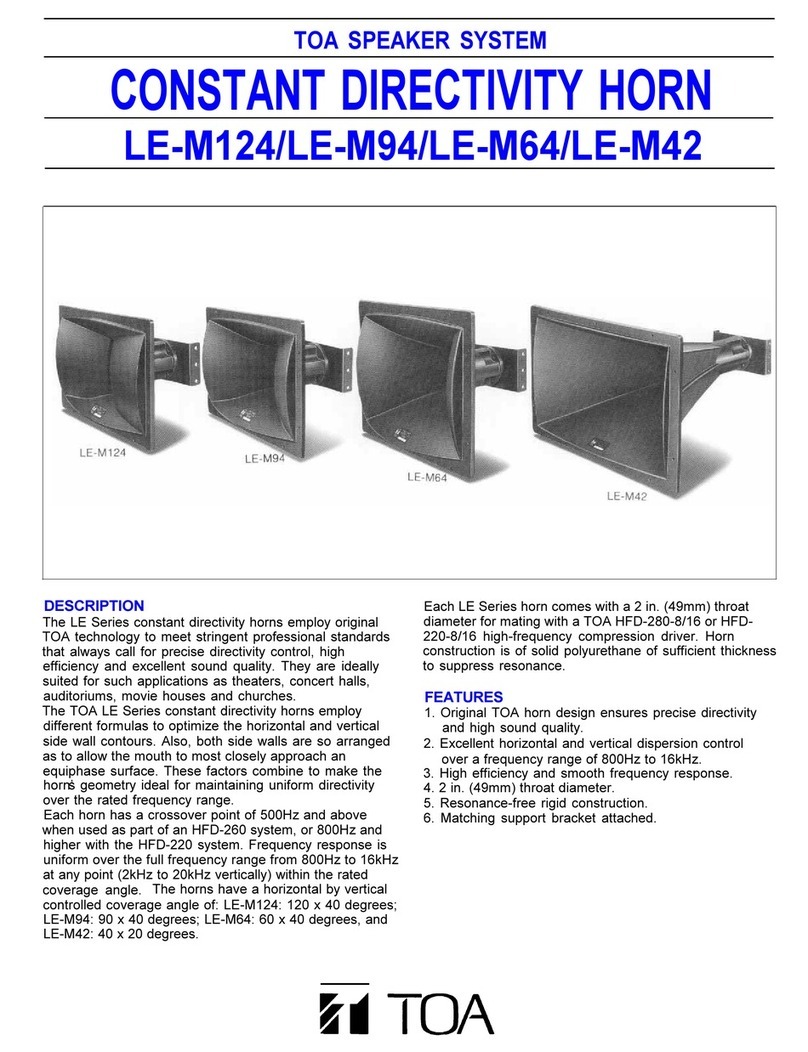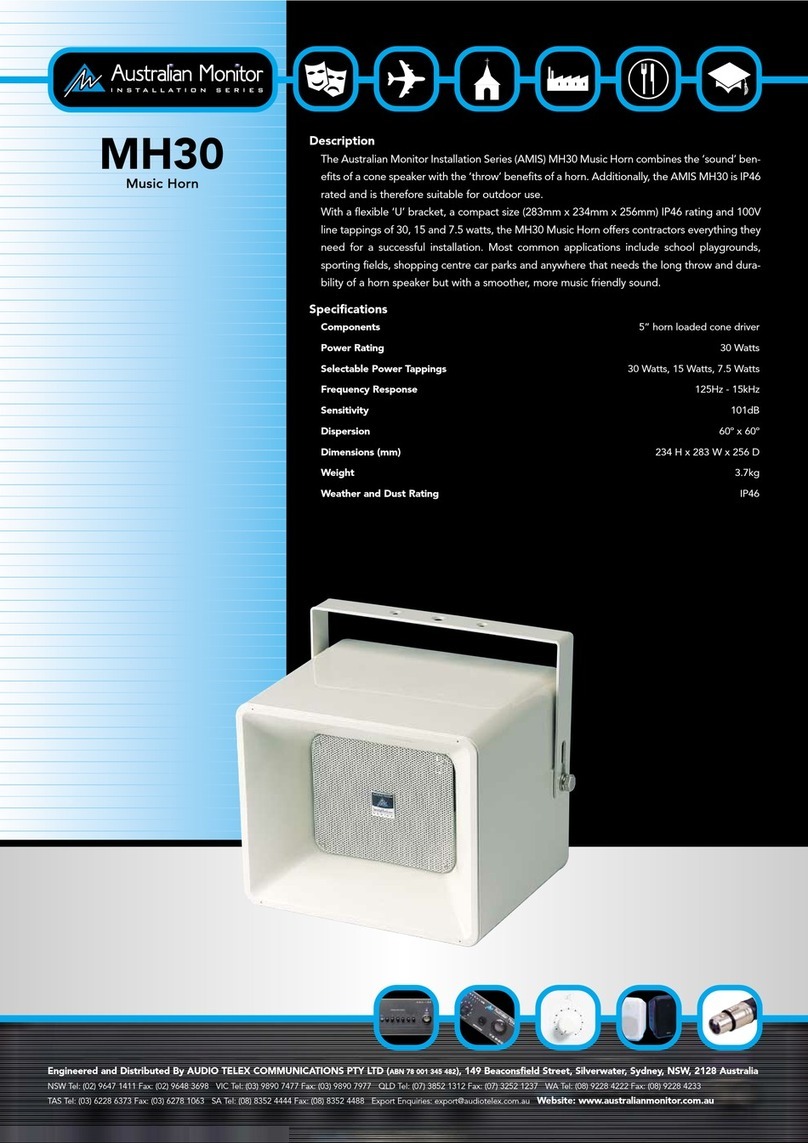
5
Maintenance & Tips
Disconnect electrical components and drain your air system before performing maintenance.
General Air Horn System Maintenance
•Your Nathan AirChime K-Series horns require very little maintenance. After years of use, however, they
may need to be rebuilt. Rebuilding these horns requires installing new diaphragms, O-rings and deep
cleaning.
•Check your air horns for debris when appropriate and at least once a month and clean when necessary.
•Drain your air system at least once a month to remove any condensation buildup on the inside of your air
tank.
•Make sure your air compressor is clean and free from debris at all times.
•Periodically change your two stage air filter on your compressor.
Tips
•Make sure your engine is running when your air compressors are in use to insure proper voltage and
prevent damage to your system.
•Do not run your compressor above its maximum rated working pressure. Doing so will not only void your
warranty but may also damage your compressor.
•The air horns are pre-tuned to a locomotive chord and to their loudest possible tone. Do not adjust the
tuning screw on the horns. Doing so will void your warranty and may damage the horns if maladjusted.
•The bells of your AirChime horn are reversible and can be unbolted and turned around for multidirectional
signaling.
Troubleshooting
Problem Possible Cause(s) Corrective Action
Air horn will not
sound. 1. No pressure in air tank.
2. No power or toggle switch in ‘Off’ position.
3. Blown fuse.
4. Loose connections or bad ground in air valve circuit
(circuit 1).
1. Check that air tank is pressurized.
2. Make sure all toggle switches are on.
3. Disconnect electrical components and replace fuse.
4. Check that all electrical circuits are secure and not
corroded.
Horn tone changes
when sounded. 1. A bell was not secured properly after performing
routine maintenance.
2. Low air pressure in tank.
3. O-rings are worn between horn bells and manifold.
1. If you have performed maintenance make sure
bells are seated flush and new O-rings were
installed.
2. Allow your air system to refill before use.
3. Replace O-rings and reseat horns.
Excessive moisture in
horn or safety
discharge.
1. Excessive water in air tank.
2. Compressor is exposed to high humidity.
1. Depressurize tank using safety, then drain tank.
Tilt the tank to drain moisture and drain more
frequently.
2. Move the compressor to an area with less humidity.
Compressor will not
run. 1. No power or toggle switch in ‘Off’ position.
2. Blown fuse.
3. Motor overheat.
4. Faulty pressure switch.
1. Make sure all toggle switches are on.
2. Disconnect compressor from power and replace
fuse (20A).
3. Let compressor cool off for about 30 minutes for
thermal overload switch to reset.
4. Replace pressure switch.
Thermal overload
protector cuts out
repeatedly.
1. Lack of proper ventilation/ambient temperature too
high.
2. Compressor valves failed.
1. Move compressor to a well ventilated area or an
area with a lower ambient temperature.
2. Replace air compressor.
Excessive knocking or
rattling. 1. Loose mounting bolts.
2. Worn bearing on eccentric or motor shaft.
3. Cylinder or piston ring is worn.
1. Tighten bolts.
2. Replace compressor.
3. Replace compressor.
Tank pressure drops
when compressor
shuts off.
1. Loose drain cock.
2. Air valve or check valve is leaking.
3. Loose connections.
4. Defective safety valve.
1. Tighten drain cock.
2. Replace air valve or check valve.
3. Check all air connections with soap and water
solution and tighten as necessary.
4. Replace safety valve.
Compressor runs
continuously and air
flow lower than
normal.
1. Excessive air usage.
2. Loose connections.
3. Worn piston ring or inlet valve.
4. Clogged air filter element.
1. Decrease air usage.
2. Check all connections with soap and water solution
and tighten as necessary.
3. Replace compressor.
4. Replace air filter element.
Compressor runs
continuously causing
safety valve (if
equipped) to open.
1. Faulty pressure switch.
2. Defective safety valve. 1. Replace pressure switch.
2. Replace safety valve.

